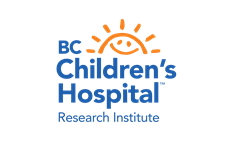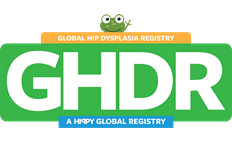About hip dysplasia
What is hip dysplasia?
Hip dysplasia, also known as developmental dysplasia of the hip (DDH), is a condition where the hip joint does not develop normally, leading to instability or dislocation.
Key facts
- hip dysplasia is the most common paediatric hip condition affecting one in every 100 babies, ranging from mild to severe
- the condition is commonly observed in babies, but it can present later in adolescents and adults
- more girls than boys are diagnosed with hip dysplasia
- it typically affects only one hip, usually the left
- it is not painful in babies, but if it is not treated early, it can lead to long-term disability, painful osteoarthritis or the need for hip surgery
- it can be identified at birth, but sometimes not for months or years later
- doctors/midwives and maternal child health nurses do routine checks for hip dysplasia in babies, but signs and symptoms are not always obvious
- hip dysplasia is the underlying cause in one out of every four hip replacements under the age of 50
- the good news is that hip dysplasia can often be treated with a brace, plaster cast or surgery, if detected early!
What are the potential signs and symptoms of hip dysplasia?
Babies:
- legs are difficult to spread apart eg. when changing a nappy
- one leg looks shorter than the other
- popping or clicking that is heard or felt (sometimes called clicky hips)
- uneven buttock or thigh creases.
Young children:
- limps or waddles when they start walking
- noticeable swayback
Adolescents:
- pain in the hip or groin
- unusual walking pattern.
What are the three main types of hip dysplasia?
- The stable hip: fixed in place but with a poorly developed socket [mild]
- The unstable hip: loose in the socket but likely to dislocate [moderate]
- The dislocated hip [severe].
What is the current treatment for hip dysplasia?
Treatment for hip dysplasia varies between children and depends on age and severity. Your doctor or clinician will recommend the best treatment option for your child.
Most cases of hip dysplasia can be treated with a brace, plaster cast or surgery to correct the hip position. Almost all patients need regular follow-ups to monitor the condition. This usually involves an X-ray and some cases, a physical examination to ensure the child’s hips continue to develop normally.
More information
Developmental dysplasia of the hip (DDH) | The Royal Children's Hospital, Melbourne
Hip: developmental dysplasia | Raising Children Network (Australia)
hip dysplasia in babies | Pregnancy Birth and Baby
International Hip Dysplasia Institute
Global Hip Dysplasia Registry (GHDR)
Community groups
Watch video
 |
Watch a short video about hip dysplasia (4 mins 7 secs) from The Royal Children's Hospital, Melbourne. |
Proudly in partnership with
VicHip is funded by the Australian Government Department of Health and Aged Care under the Medical Research Future Fund grant 2015989.
Murdoch Children's Research Institute acknowledges the Traditional Custodians of lands on which we work and pay our respect to their Elders, past, present and emerging.










